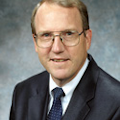Market fundamentals explain the tripling of oil prices between the beginning of 2007 and middle of 2008, according to two Federal Reserve Bank of Dallas reports on suspicions about the role of speculation.
The reports, by Michael D. Plante, research economist, and Mine K. Yucel, senior economist and vice-president, say a surge in the price of crude oil to a peak exceeding $145/bbl in July 2008 occurred in well-functioning futures and physical markets.
Because the increase coincided with increases in futures-market trading and activity by noncommercial traders, questions linger whether speculators pushed prices beyond levels justified by physical supply and demand. Amplifying concern is growth in activity by noncommercial traders, or speculators, from 10-15% of unsettled oil futures contracts on the New York Mercantile Exchange in 2000 to about 40% now. During that period, total trading in oil futures contracts has about tripled.
Despite the coincidence, oil futures prices didn’t conflict with theory about how they should have responded to physical market changes, according to one of the reports.
“During normal times, the futures price should be higher than the spot price—with the premium roughly equaling the cost of storage and lost interest income—and inventories should be abundant,” Plante and Yucel say. “In certain situations, such as when demand is temporarily high or supply temporarily low, the spot price will be higher than the futures price, and inventories will be relatively low.”
An examination of price and inventory data indicates the coincident increases in speculative activity didn’t unduly influence the price gyration of 2007-08, the analysts conclude. “The data are consistent with how a well-functioning futures market would behave, initially when there is tightness in the market and later when there is considerable slack due to the global recession,” they say. “Futures market traders, therefore, seem to have been routine market participants.”
Market fundamentals
In the other report, Plante and Yucel call the tripling of oil prices between 2007 and mid-2008 “consistent with several market fundamentals.”
Demand for oil, which is relatively insensitive to price changes in the short term, had been rising in emerging markets, they point out. And surplus production capacity among members of the Organization of Petroleum Exporting Countries fell during the period.
“The behavior of inventories was also consistent with the reality of a tight market, not with a story of speculation-driven hoarding, whether we look at inventories above ground, below, or floating at sea,” the analysts say. “Hence, evidence from the physical market for oil, similar to that from the futures market, is consistent with oil-market fundamentals leading to increasing oil prices before the global recession.”
Plante and Yucel further point out that the price swing of West Texas Intermediate crude oil in 2008 approximates those of Illinois basin coal, tallow, and cobalt, for which no futures markets exist.
“Such integrated movement in the prices of these commodities is consistent with a pure demand story, rather than a speculation one,” they say.
About the Author

Bob Tippee
Editor
Bob Tippee has been chief editor of Oil & Gas Journal since January 1999 and a member of the Journal staff since October 1977. Before joining the magazine, he worked as a reporter at the Tulsa World and served for four years as an officer in the US Air Force. A native of St. Louis, he holds a degree in journalism from the University of Tulsa.